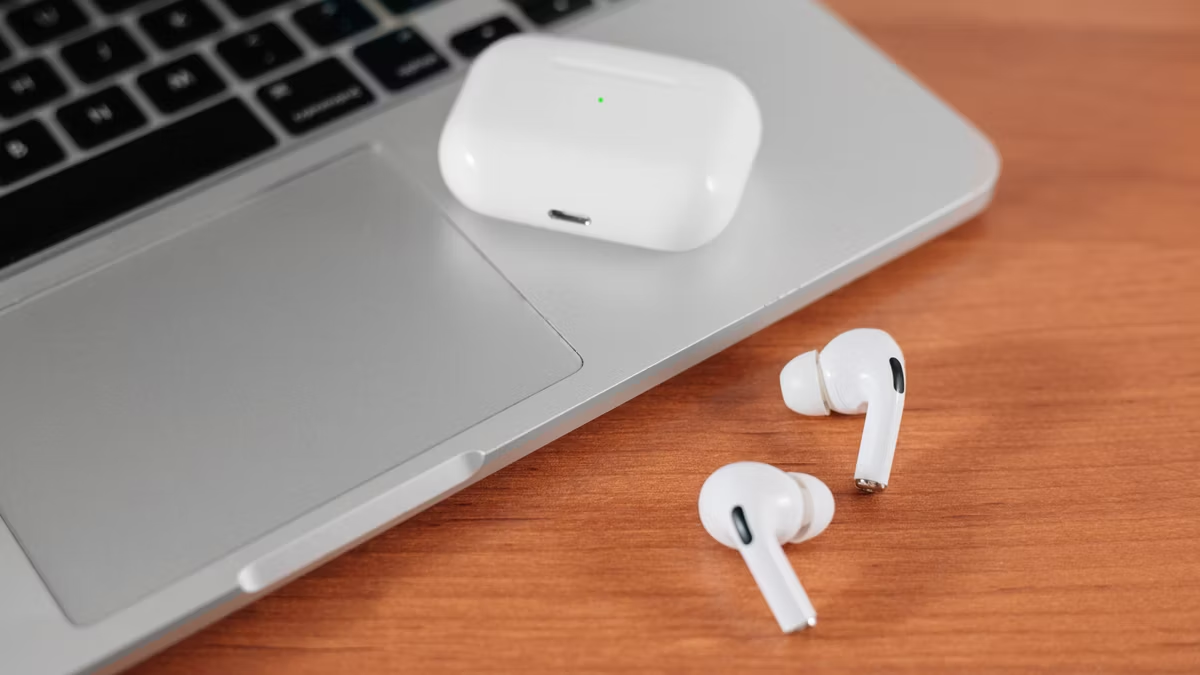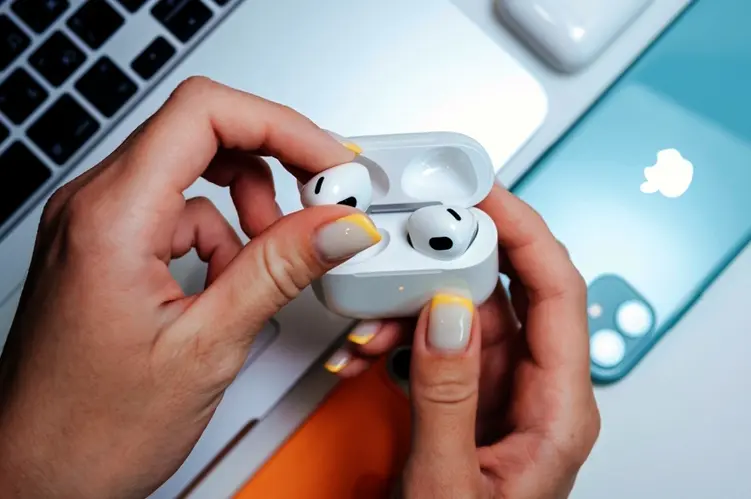Table of Contents
How To Connect New AirPods To Mac?
How To Connect New AirPods To Mac? AirPods work with pretty much anything that supports Bluetooth, including Mac computers. But sometimes you might run into problems.
For example, your AirPods might disconnect randomly. But don’t worry, there are a few simple tricks to get them working again. The process is slightly different depending on your Mac computer.
Features Of Connect Connect New AirPods To Mac
- The easiest way to connect your new AirPods to your Mac is to make sure that you’re signed in to iCloud with the same Apple ID and that both your iPhone. And your Mac is Bluetooth enabled. With the AirPods in their charging case. Open the lid and press and hold the setup button on the back of the case until the status light flashes white. Then select your AirPods in the list of Bluetooth devices on your Mac.
- You can use AirPods with any compatible device that supports Bluetooth. Including non-Apple products like Android phones and Windows 10 PCs. AirPods also work with the Apple TV and other third-party audio equipment.
- Sound automatically switches between devices that are connected to your AirPods. For example, if you start playing music or podcasts on your iPhone and then take a phone call, the sound automatically switches to your phone. AirPods can also switch to your iPad when you make or receive a FaceTime video call.
- Starting with macOS Big Sur, you can connect a second pair of AirPods to your Mac without having to first reconnect them to another iPhone or iPad. Just make sure that the AirPods are in their charging case, and then select them on your Mac when you choose Bluetooth preferences from the Apple menu or System Preferences. If your AirPods don’t appear in the Bluetooth control panel, shut the case, wait 15 seconds, and then open it. If your AirPods still don’t show up, try restarting your Mac.
Setup
If you’re like most people who use Apple’s AirPods, chances are you’ve already paired them with an iPhone or iPad. But did you know that your AirPods can also connect to a Mac? Here’s how.
First, make sure your AirPods and their charging case are close to your computer. Open System Preferences on your Mac and make sure Bluetooth is turned on. With your AirPods still in their case and the lid open, press and hold the setup button on the back of the case until the status light flashes white. When you see your AirPods in the Bluetooth devices list, select them and click Connect.
Once your AirPods are connected to your Mac, they’ll automatically connect to whatever device is playing audio at the moment. This is called automatic switching, and it’s a great way to save time. To change this setting, go to the Bluetooth preferences on your Mac. Choose Options next to AirPods when they appear in the list of Bluetooth devices. From here, you can control things like whether or not to allow Siri access to your AirPods. the default output device, and more.
You can also control all of these settings from your iPhone by going to the Settings app and tapping on AirPods. This will bring up a screen that allows you to change your AirPods’ settings, including how they pair with other devices and which app controls them.
Pairing
If your AirPods are already connected to an iPhone, they may be automatically paired with your Mac. This happens when both devices are compatible with Apple’s Handoff feature and you’re logged in to the same Apple ID on each. To check whether this is the case, open Control Center or the Bluetooth menu on your Mac (the volume icon that looks like a speaker) and ensure AirPods appear in the list.
If they don’t, go to System Preferences on your Mac (the app varies depending on the version of macOS you have) and choose Bluetooth settings. With your AirPods still in their charging case and the lid open, bring them near your Mac and press and hold the setup button on the back of the case until the status light flashes white.
Once the AirPods are paired, they’ll show up in the Bluetooth preferences window on your Mac and move to the top of the list of available devices. From here, you can change many features of your AirPods, including what action a double-tap triggers and whether they automatically connect to a Mac when you’re wearing them.
You can also manage your AirPods on your iPhone, iPad, or iPod touch. Learn how to adjust your audio settings change noise cancelling and transparency modes, and more.
Reconnecting
If you’ve already used your AirPods with an iPhone, they may automatically connect to your Mac if the devices are compatible and you’re signed in with the same Apple ID. If this is the case, you should see them in the Bluetooth menu of your Mac.
With them in the charging case and the lid open, press and hold the button on the back of the case until the status light flashes white. Then, bring the case close to your Mac and follow the steps on the screen.
Once the Mac detects your AirPods, select them from the menu in the Bluetooth settings and click Connect. You can also configure the settings of your AirPods from this menu. Like manual ear detection or changing what happens when you double-tap an AirPod.
You can also adjust the volume from your Mac’s menu bar by clicking the volume icon that looks like a speaker in the top right of the screen. If you want to hear music or other audio in full quality, however. We recommend using a better solution that can connect. And disconnect Bluetooth devices faster than the native macOS menus: Check out AirBuddy and ToothFairy on Setapp (it’s free for 7 days, then $9.99/month). They work with any Bluetooth headset and can be used on other iOS and Mac devices.
Troubleshooting
It’s not uncommon for Bluetooth connections to get a little wonky. Especially before or after any major software updates. In those cases, it may be necessary to repair your AirPods. Thankfully, it’s an easy process. First, make sure your AirPods are charged (for non-Max models) in their case. Next, ensure your Mac is running iOS 10.3.3 or later and that Bluetooth is turned on. You can check this by opening the Control Center and navigating to the Bluetooth icon.
If the AirPods aren’t listed, they might be out of range. Try moving them closer to your MacBook and re-pair them. You can also try opening System Preferences and navigating to the Bluetooth menu. It’s also worth double-checking that your AirPods are listed as an output device in this menu.
Another common troubleshooting tip is to restart your Mac and the AirPods. This can help solve a wide variety of problems, including Bluetooth connectivity issues. Finally, it’s always a good idea to clean the charging case. Any dirt or dust can prevent the AirPods from connecting properly.
If all of these tips fail to fix your AirPods. It might be time to call in the pros. The team at CleanMyMac X can perform a wide range of automated routines, including repair permissions. Thin Time Machine snapshots, reindex spotlight, and more. They can even remove rogue apps and system settings to speed up your computer.
Conclusion
AirPods (2nd and 3rd gen) and AirPods Pro (1st and 2nd gen) can automatically switch between the devices you use them with, like your Mac, iPhone, and iPad. You can also connect them to a PC with Bluetooth capabilities. But that process will look a little different depending on the model of computer you have. Follow these steps to pair and connect your AirPods to your Mac computer. Then you can listen to music, take calls with Siri, and more.






Add comment